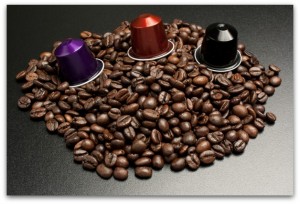When a company introduces a new product, they try to hold on to being the one-and-only manufacturer of that product for as long as possible, even introducing more technology to keep other companies out of the game. Someone always finds a way to beat the system.
Perhaps the biggest home goods fad in recent years is the single-cup coffeemaker. The market is dominated by Keurig, who sell specially made machines that brew one cup of coffee at a time, in under a minute, as well as the coffee-filled “pods” or “K-cups” that fuel the device. (The pod is placed in a chamber, the machine punches a hole in its foil top, and hot water runs through the K-Cup, out of the machine and into a mug.) There are lots of coffee companies out there, but Keurig has only licensed a few to make official K-cups. Newer, digital Keurig coffeemakers are outfitted with a “lockout chip” that scans inserted coffee pods; official ones have a code on their foil lids that allow them to be used. However, someone discovered—and widely shared—a ridiculous security vulnerability. Non-official K-cups can be used by taking the lid off of a real K-cup pod and placing it on top of a non-official K-cup.
Free the music!
At the height of the Napster craze in the early 2000s, record companies were scrambling for a way to prevent people from pirating CDs and trading the songs online for free. Two new kinds of copy-protection were embraced by major labels, particularly Sony: Cactus Data Shield and KeyAudio. They worked by including an extra track on the audio CDs, physically located on the outer-most ring of the disc. The track was corrupted, which would stymie copying on PCs. Hackers quickly discovered, however, that discs were made free to be copied by disabling the protection. How to disable those programs? Covering up the CD’s outer ring by tracing it with a black Magic Marker.








